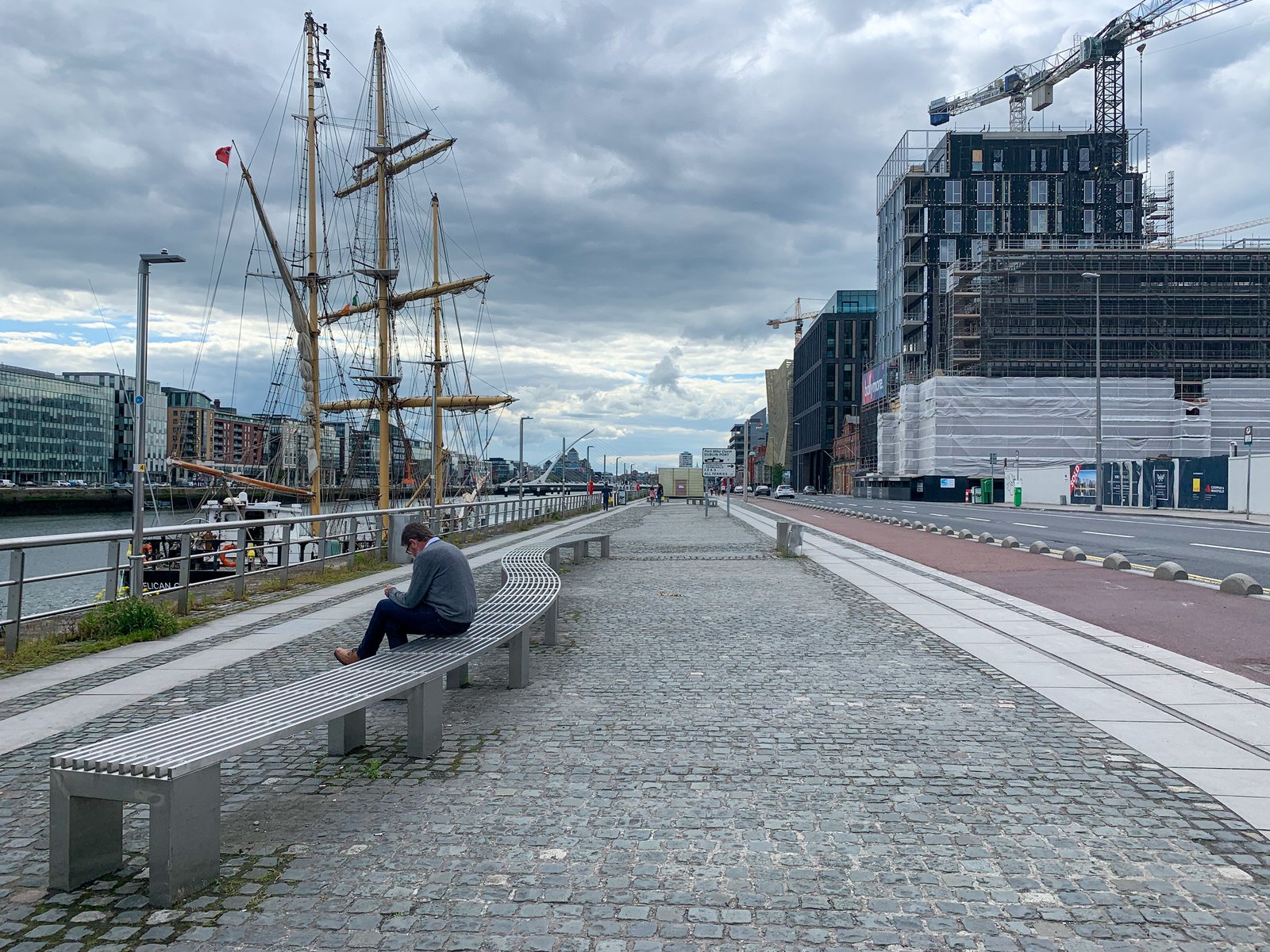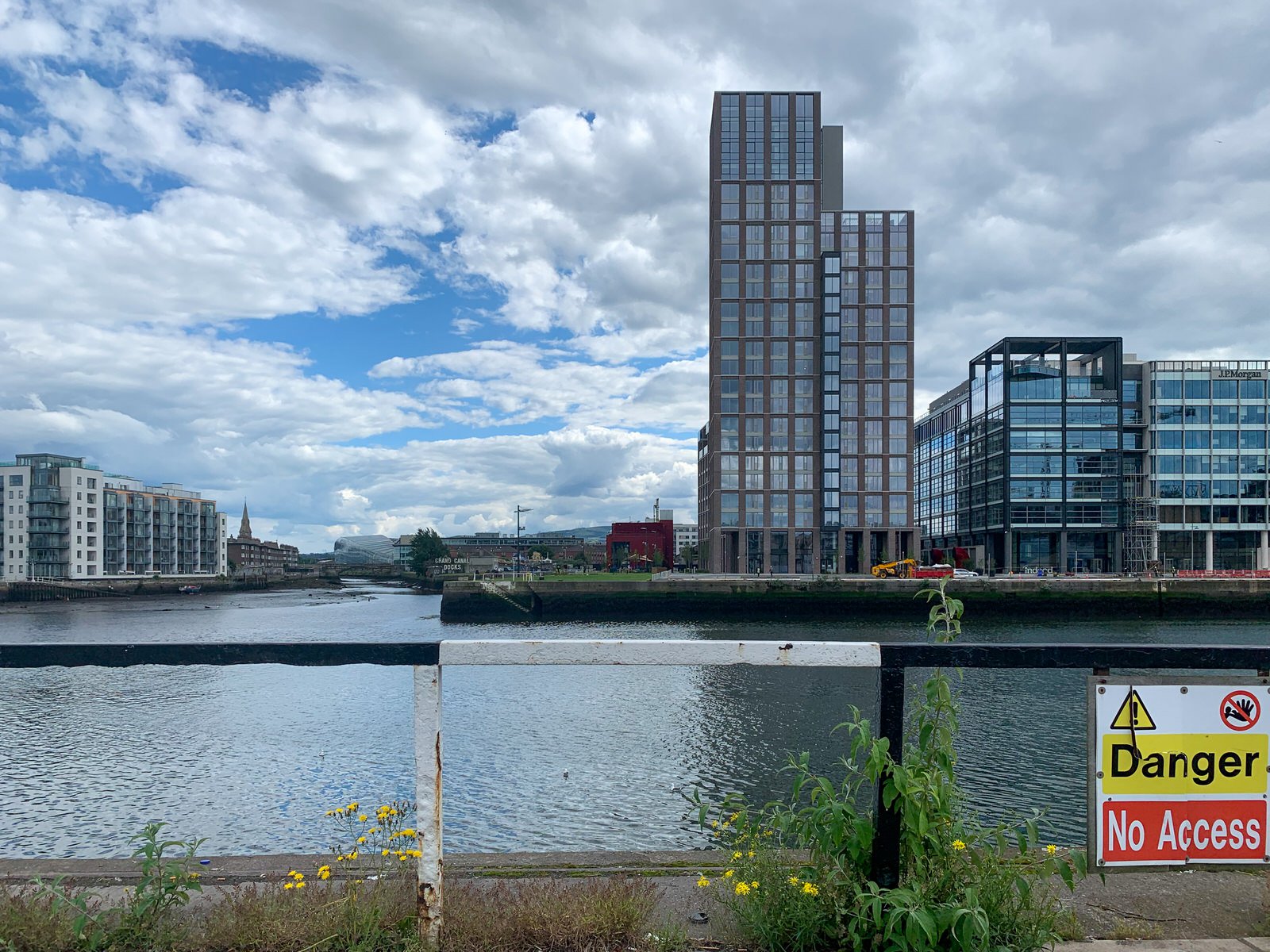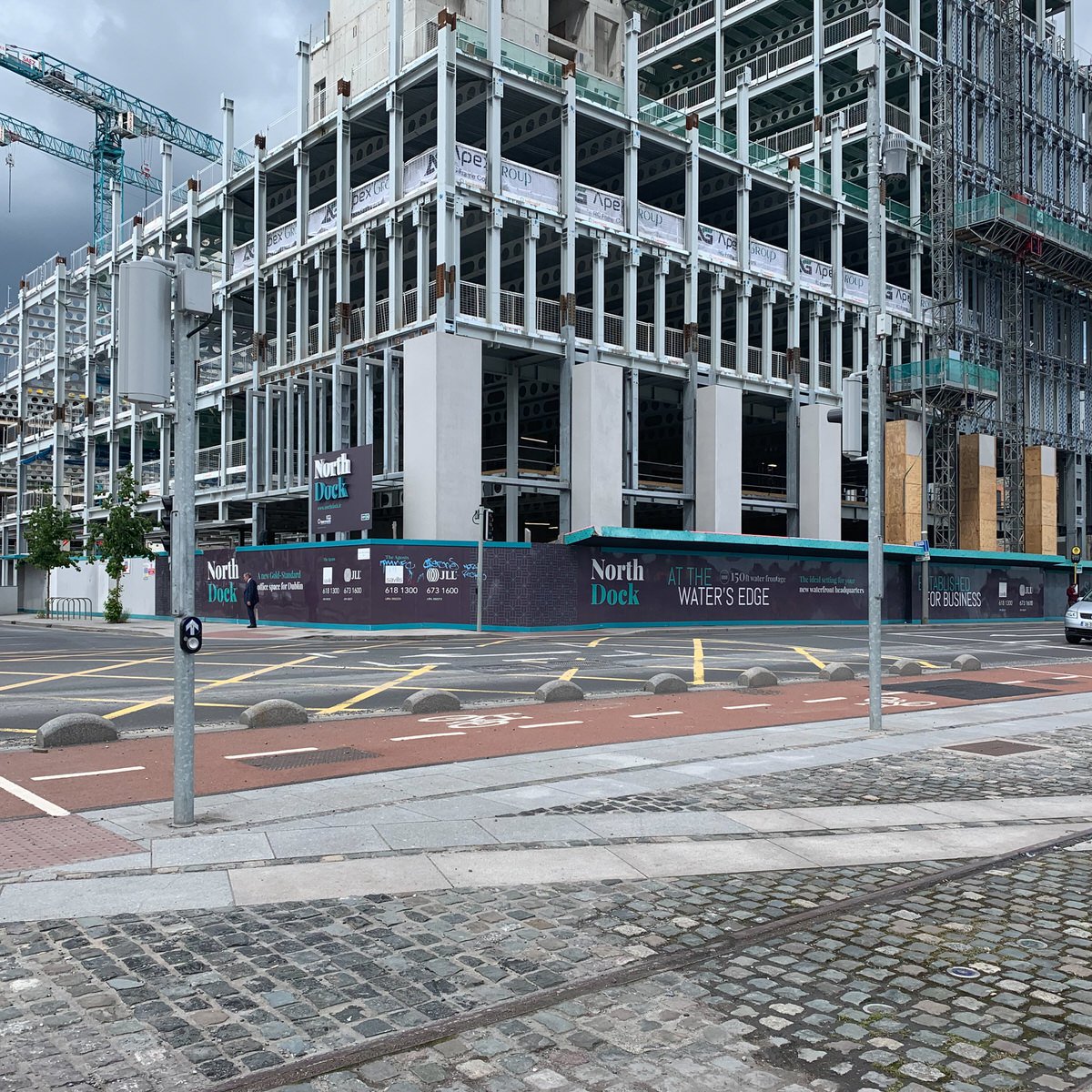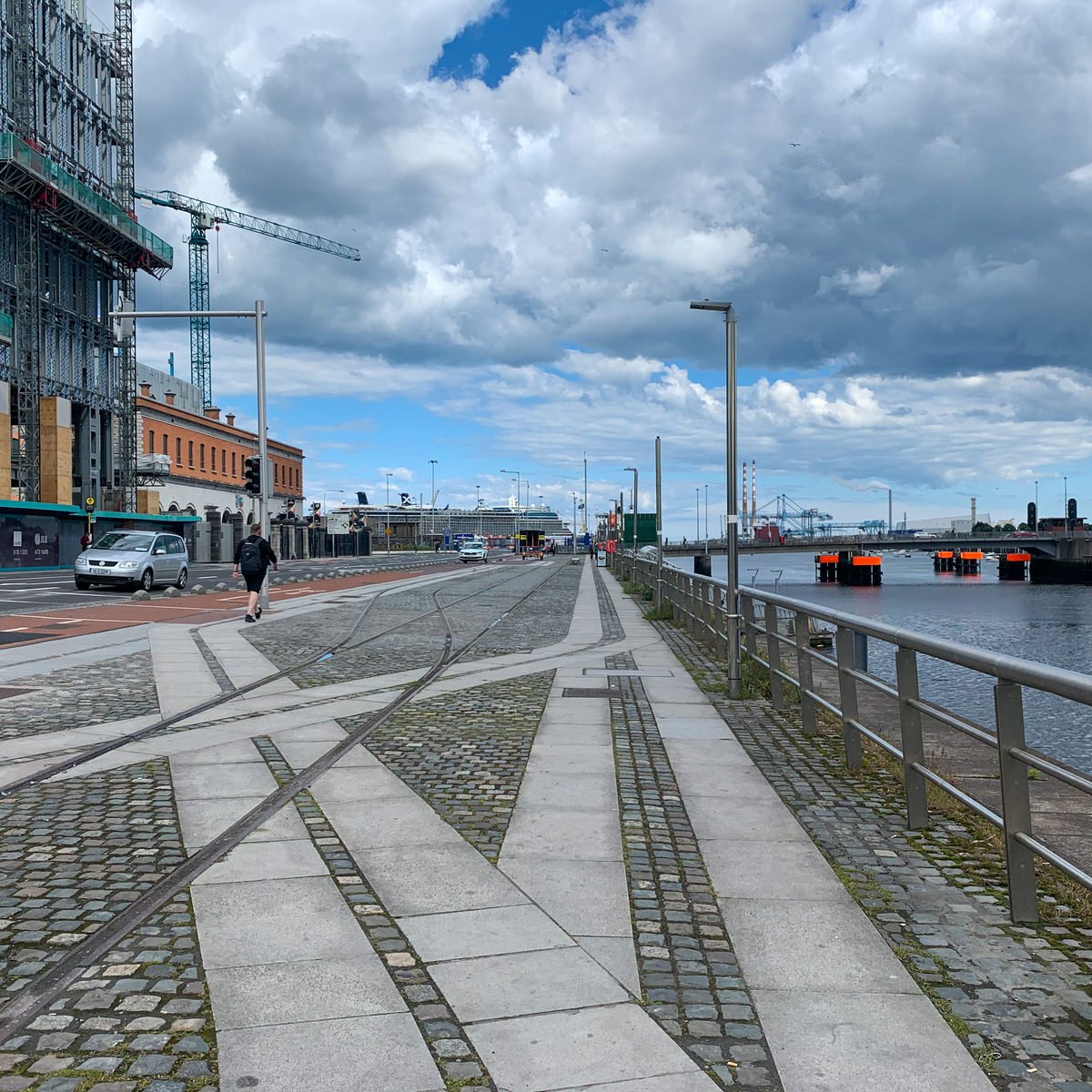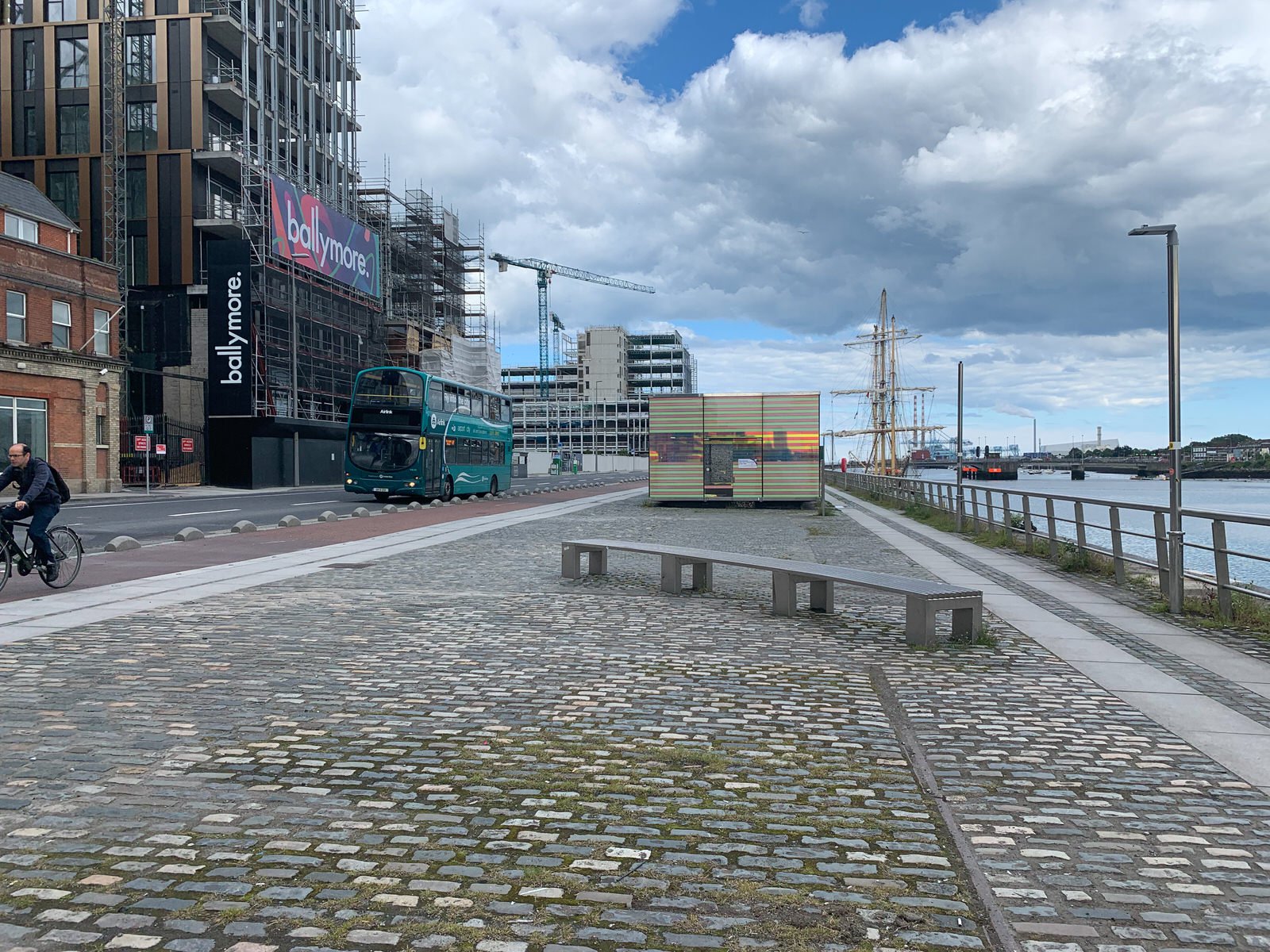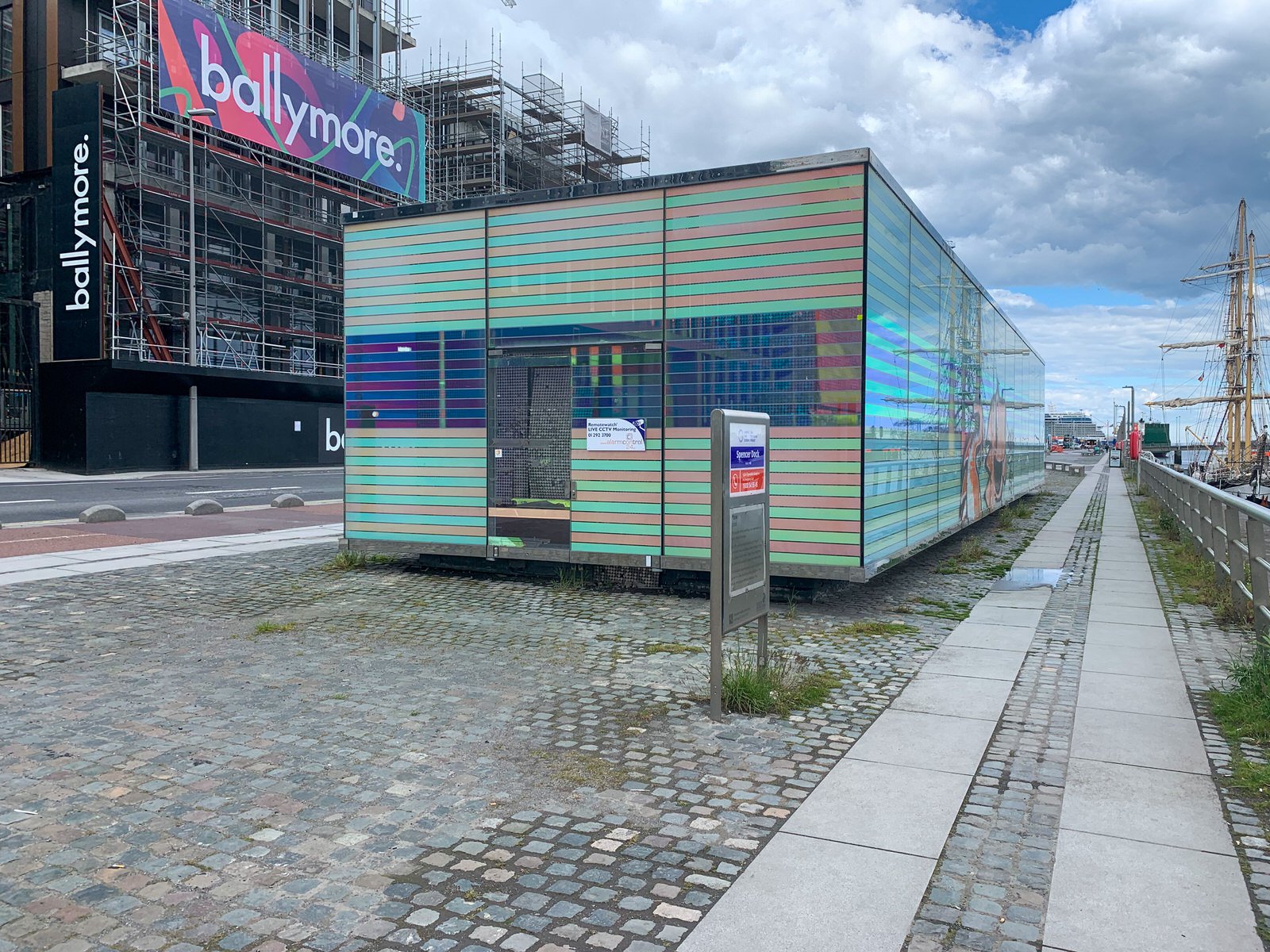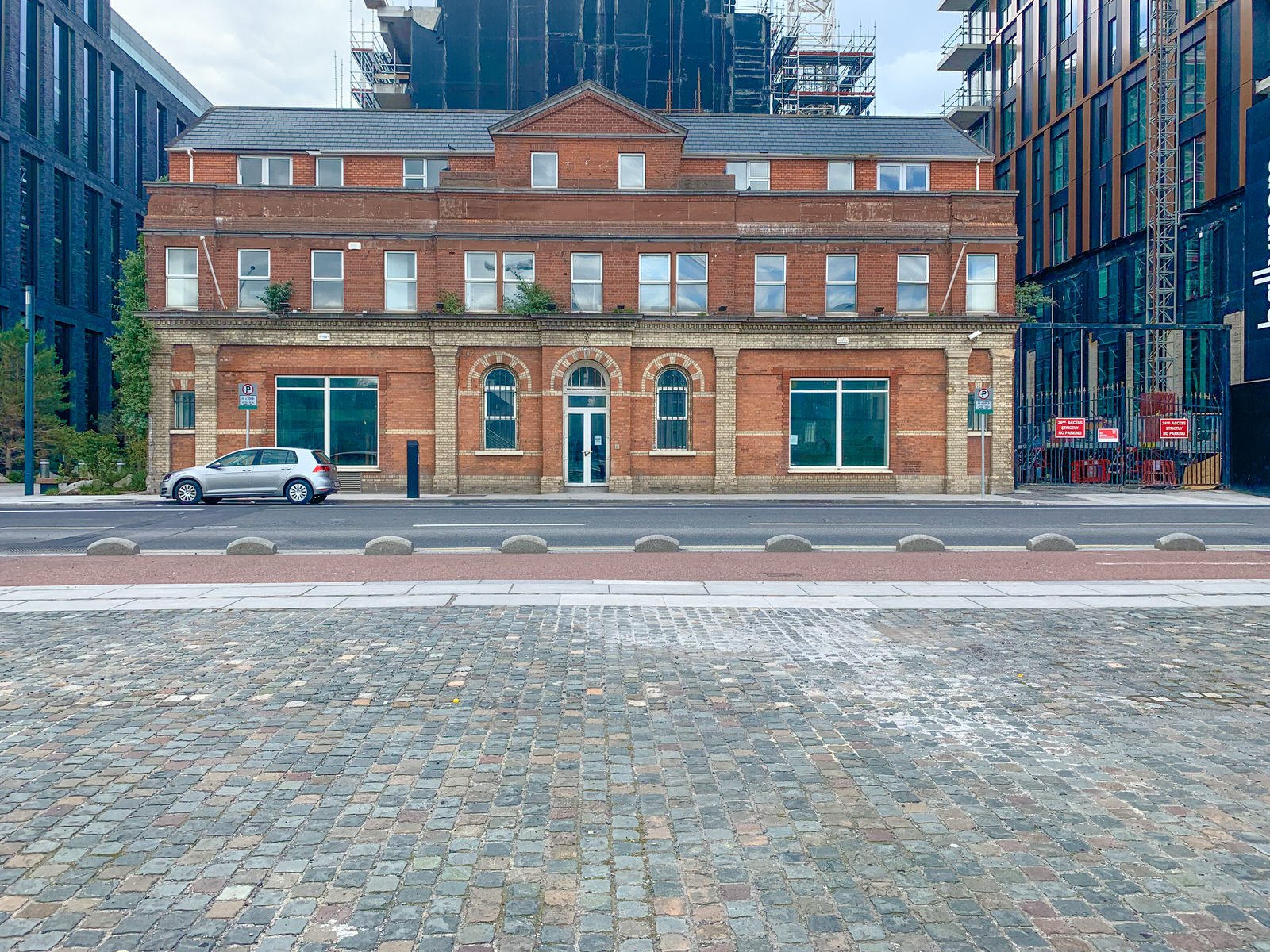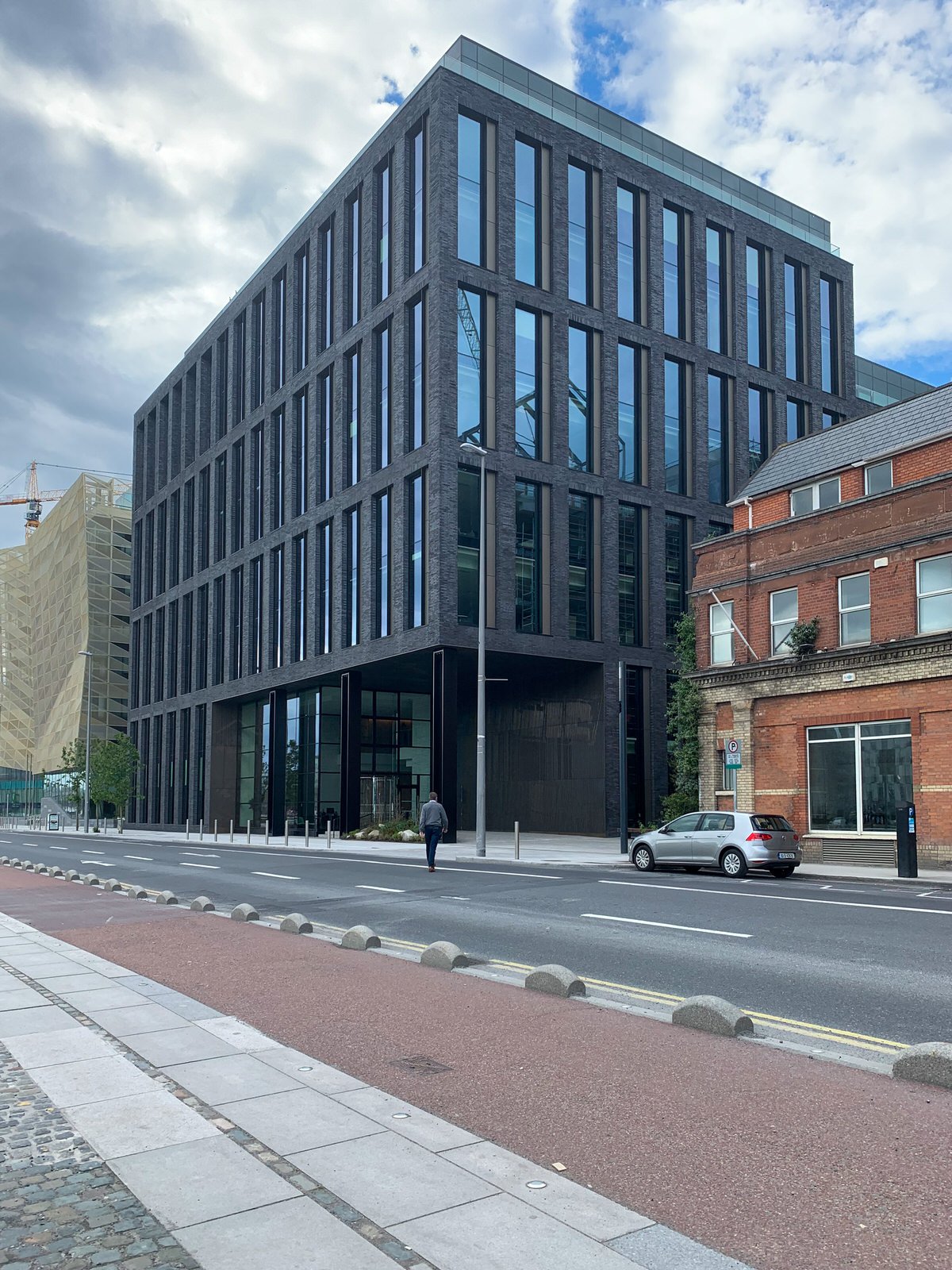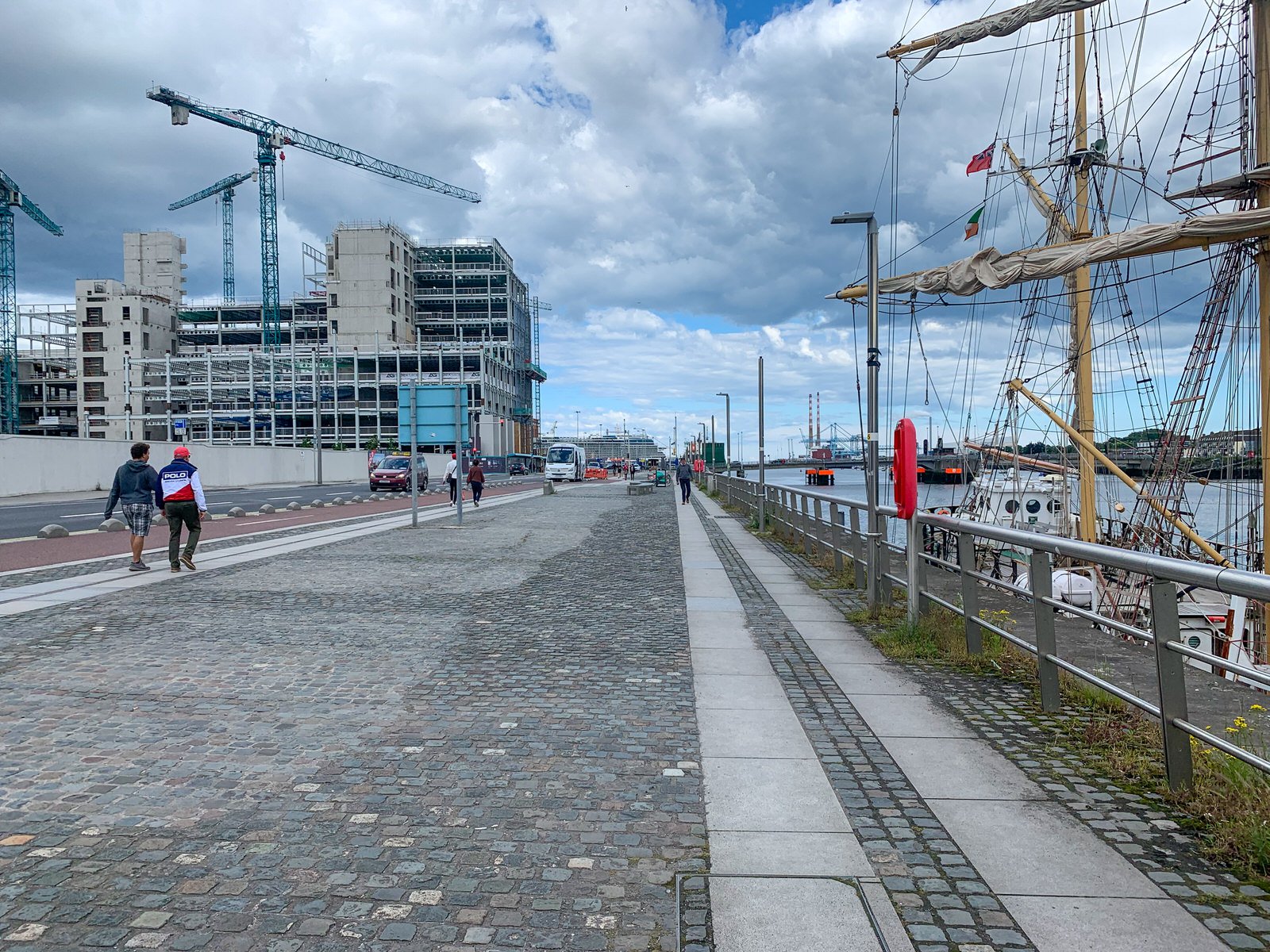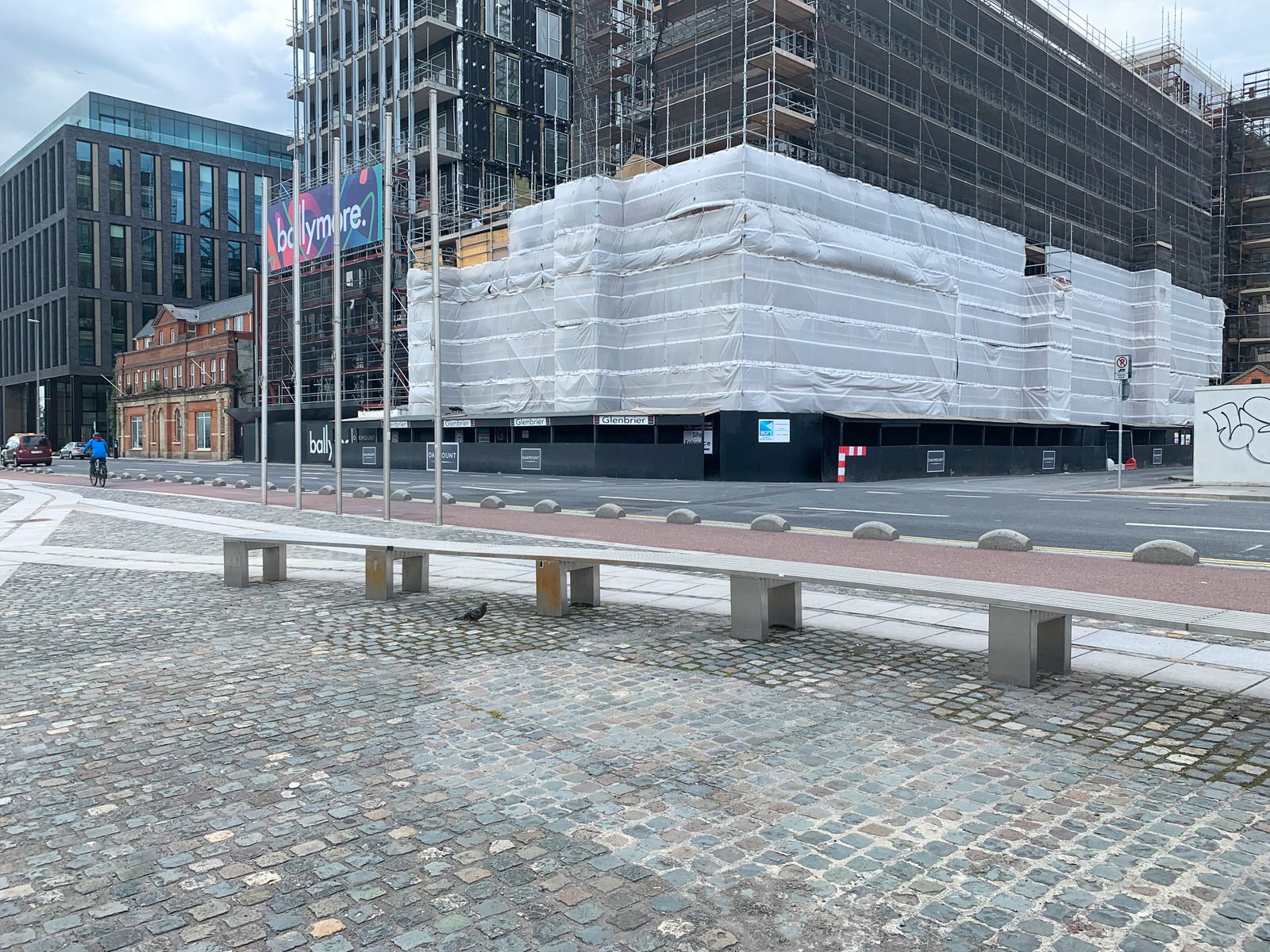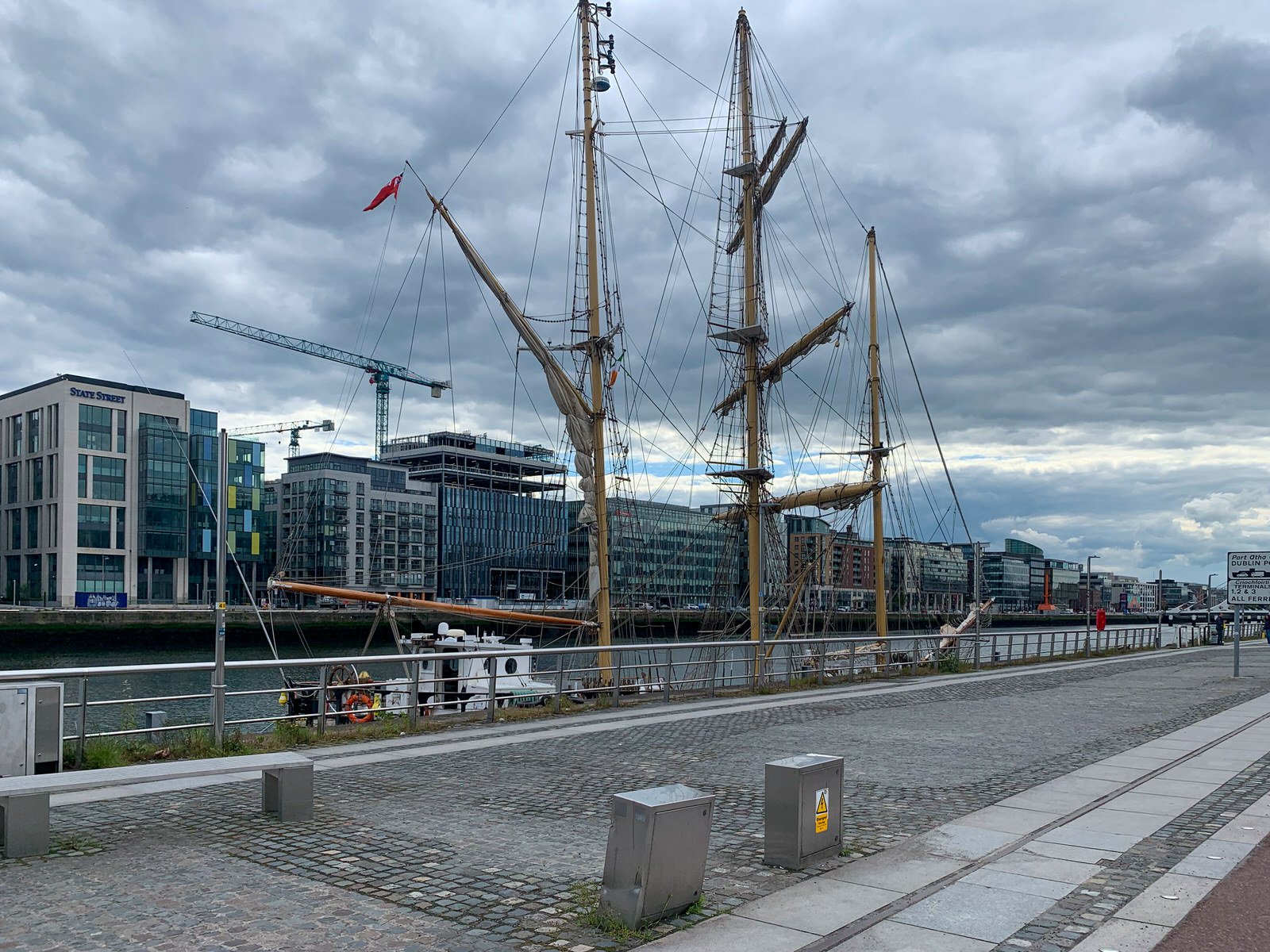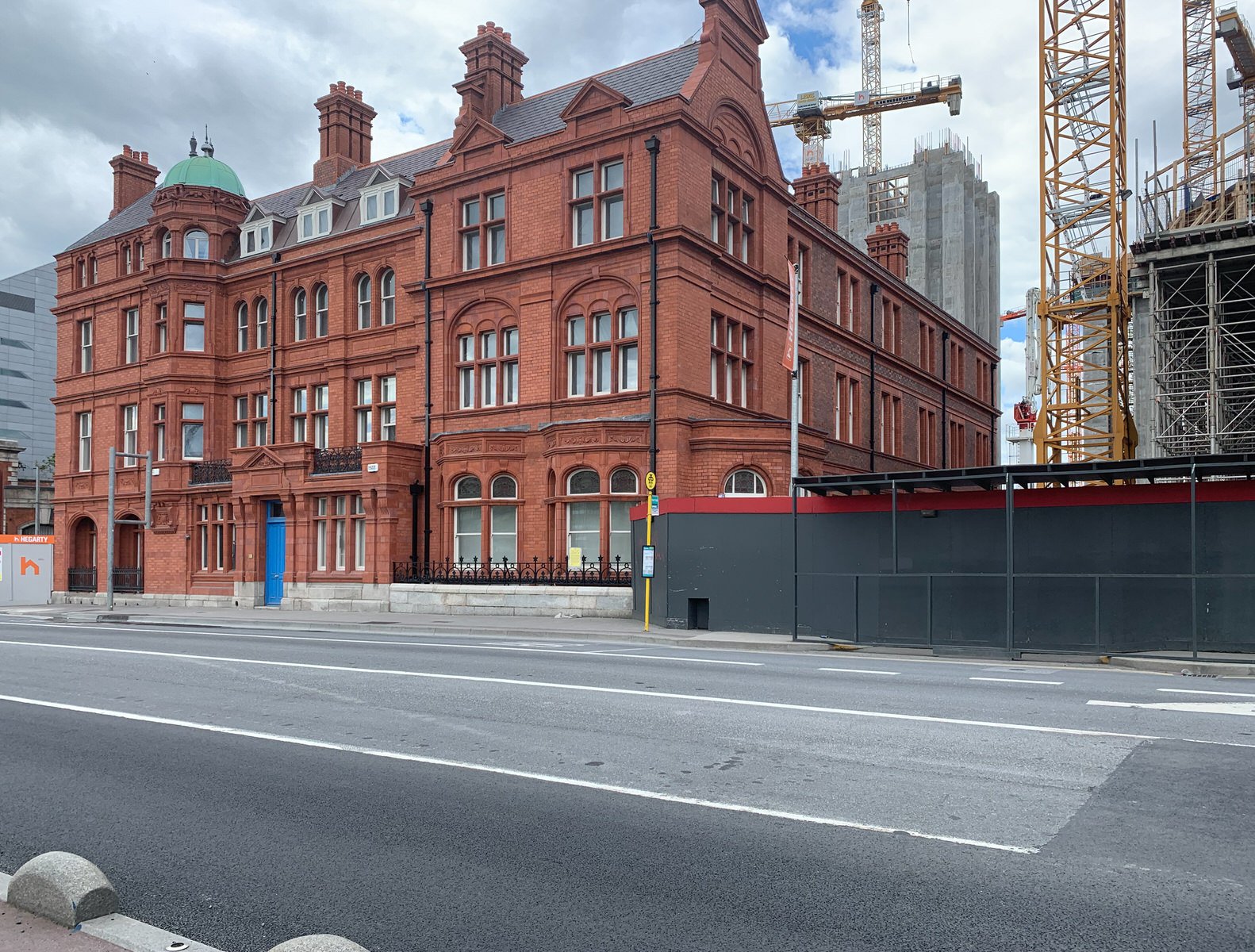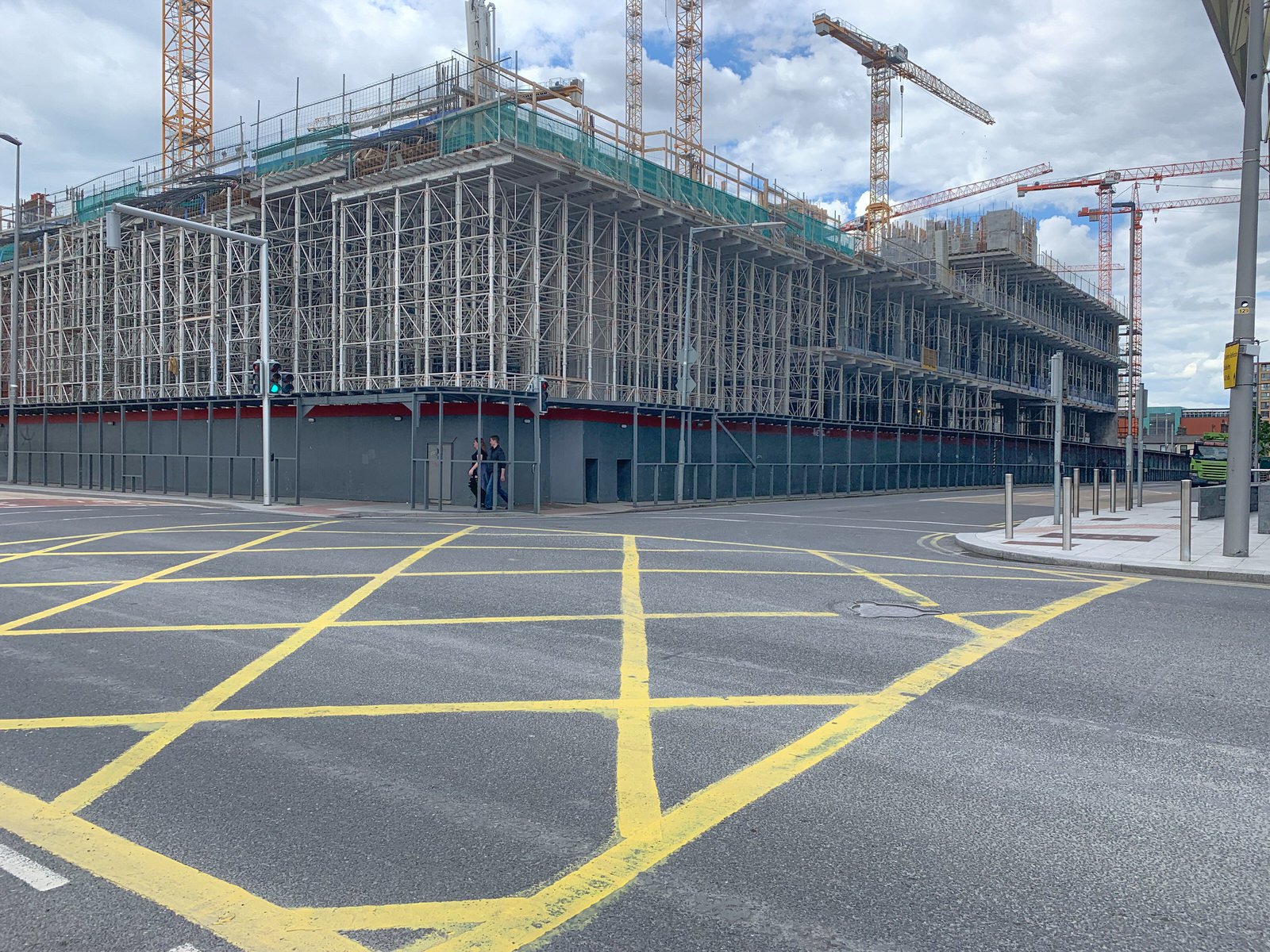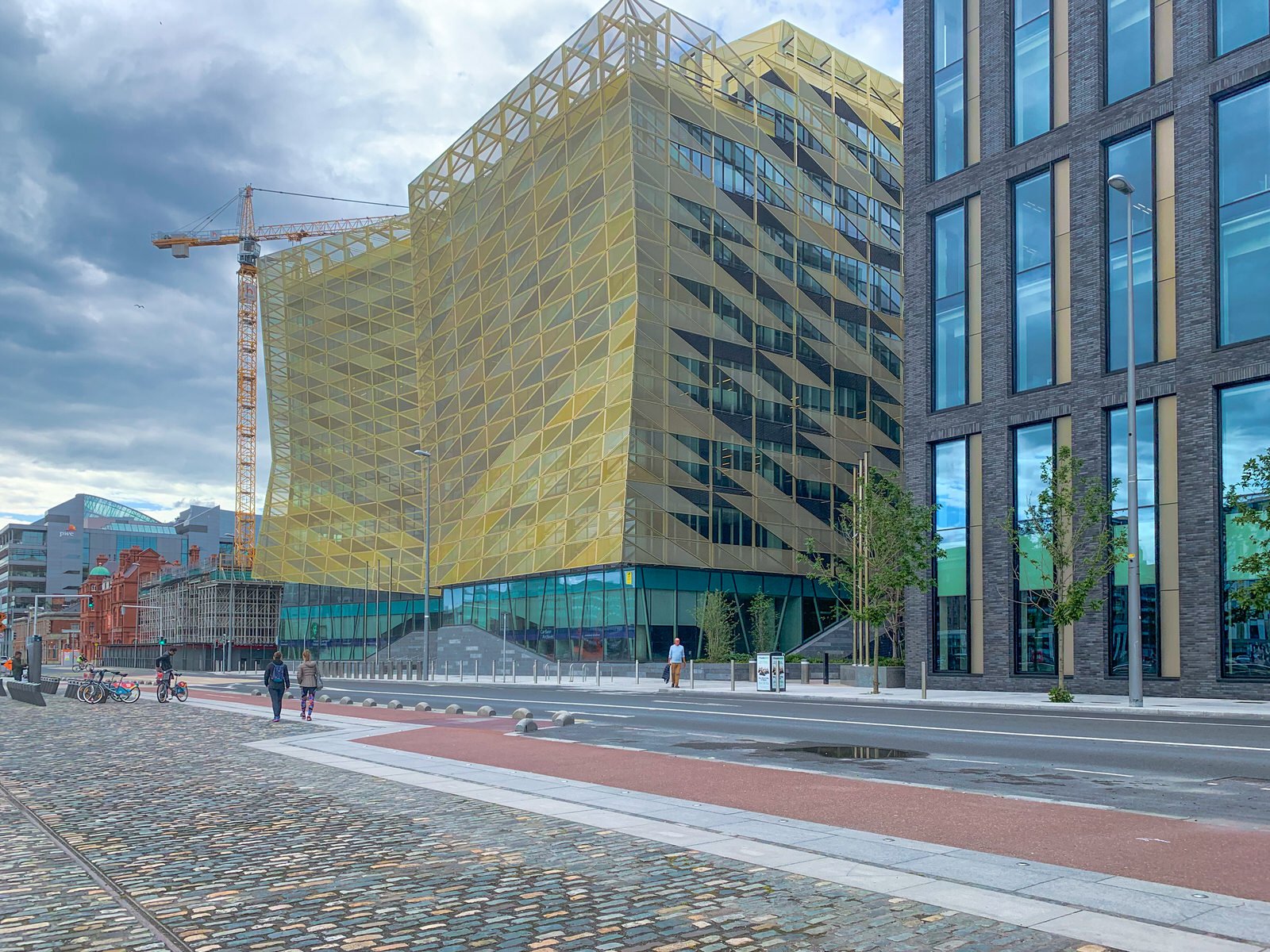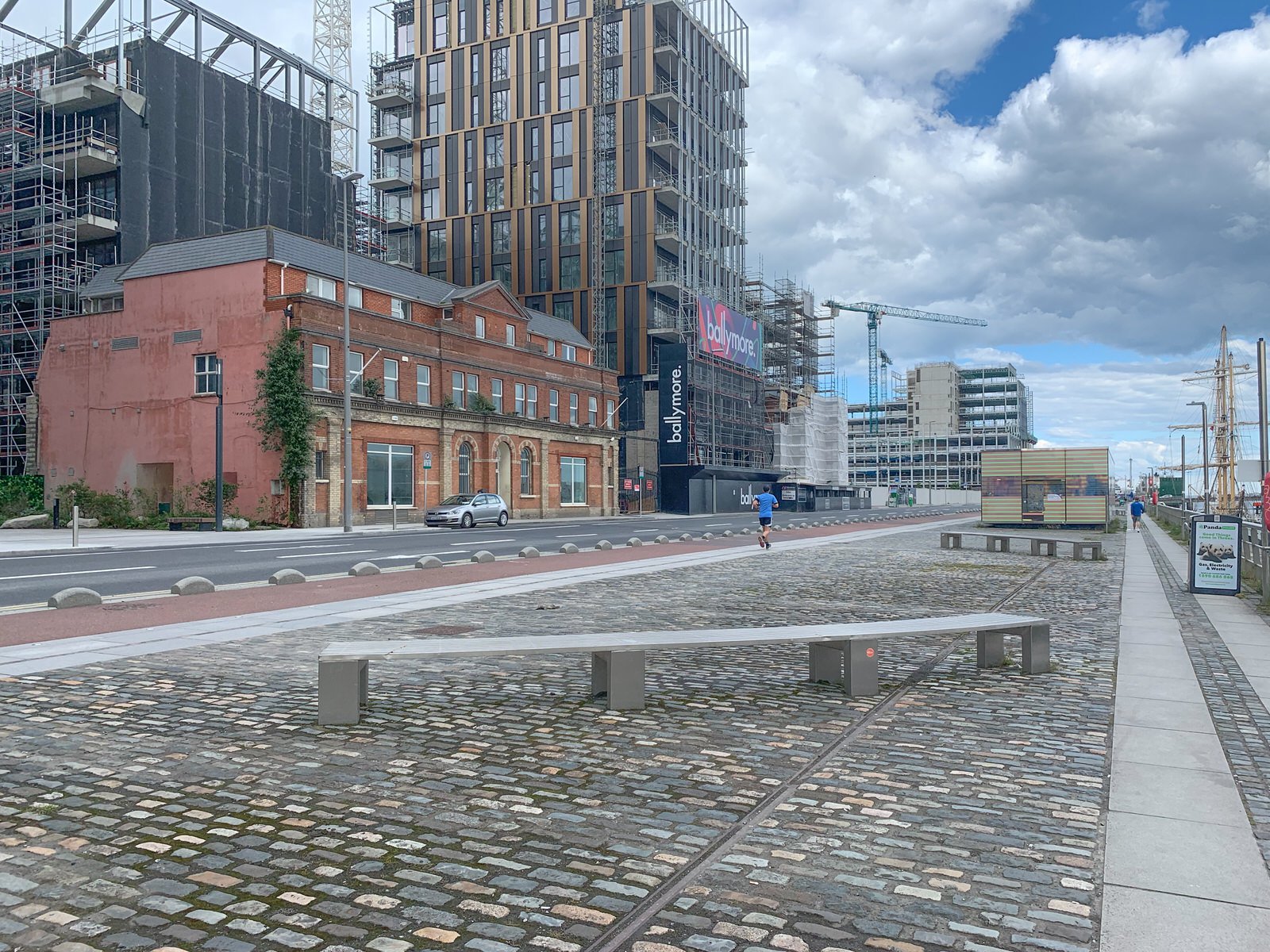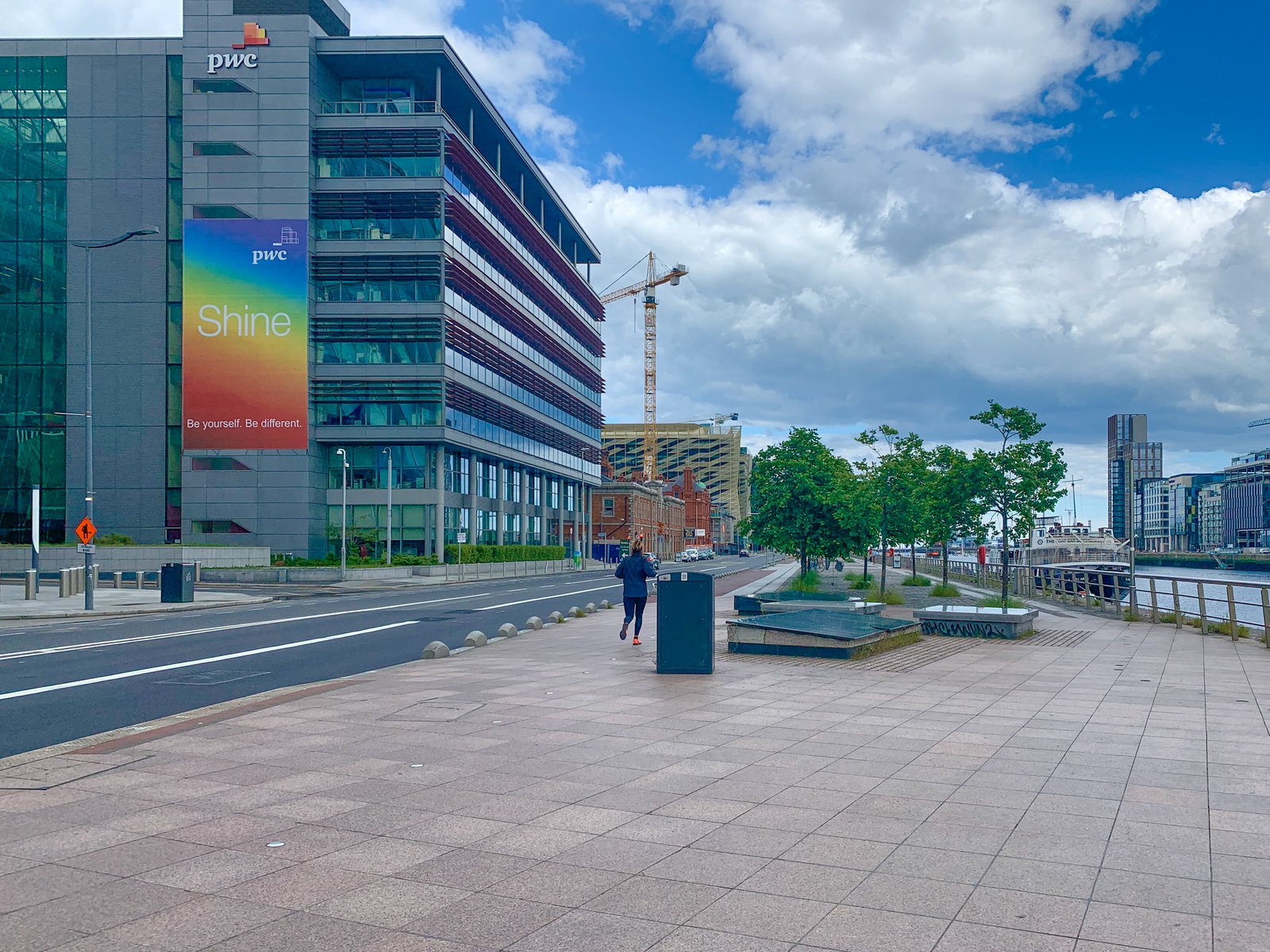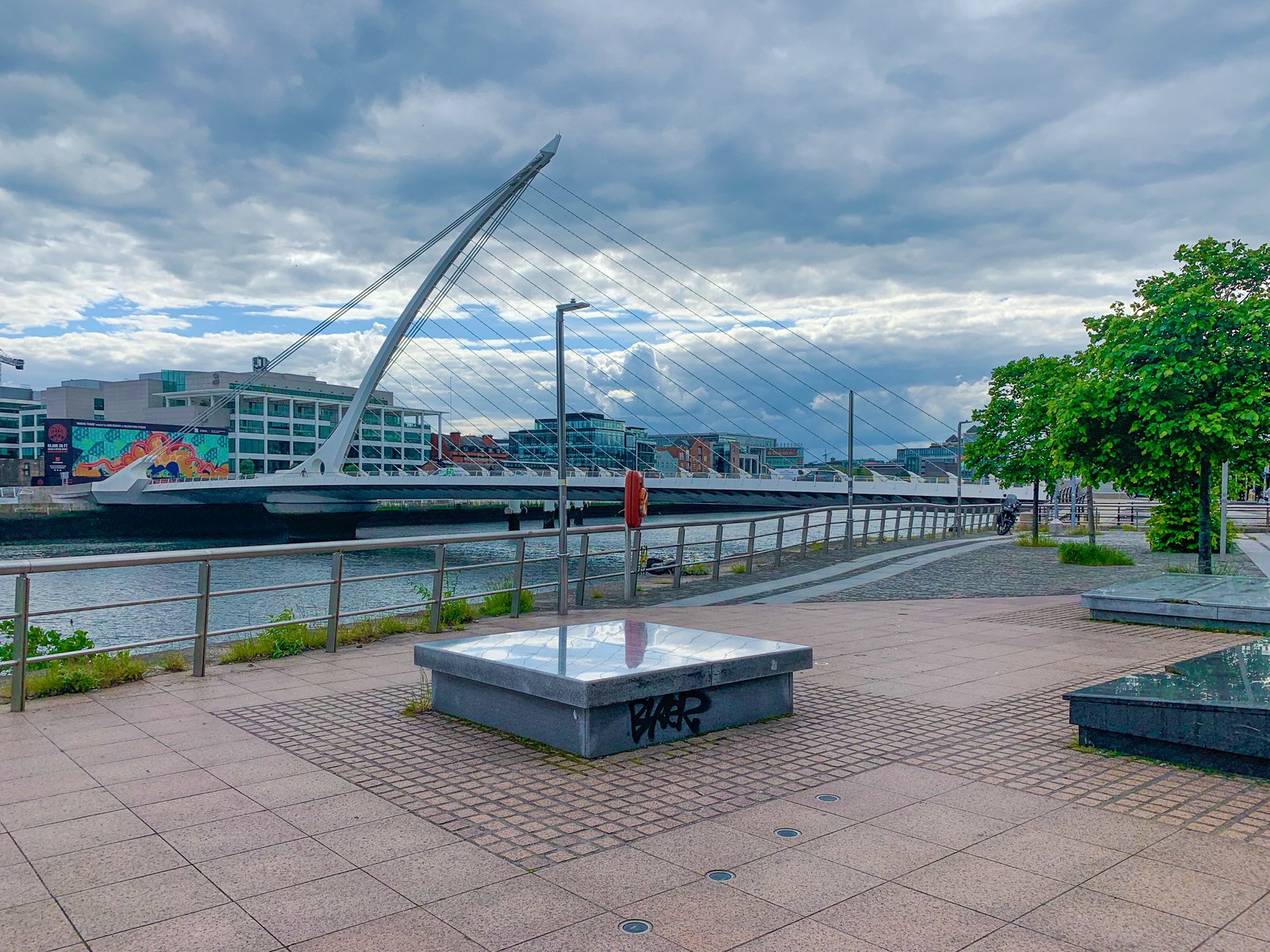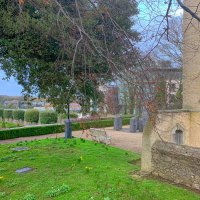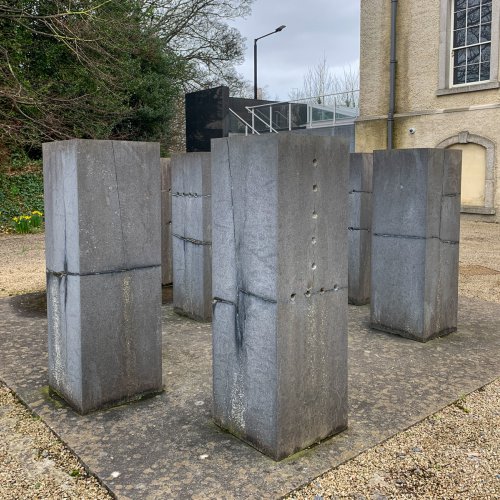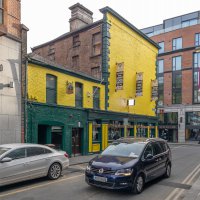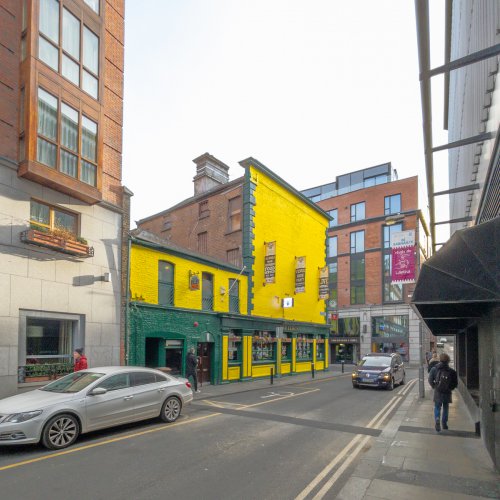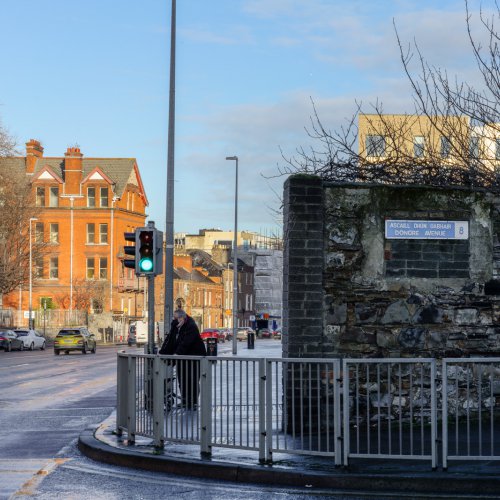These photographs date from 2019. I worked for a shipping company located here back in the late 1960s and it has changed a lot since then. North Wall Quay retains the most obvious links with industry, being located closest to the functioning docks, and bearing remnants of nineteenth-century railway infrastructure. It also has the most open aspect of all the quays, being closer to the sea. The quays form an important part of maritime developments within the city stretching back to the thirteenth century. They are reminders of the economic and maritime development of Dublin as Ireland's principal port. Stone quay, built c.1800, in two sections, located between Sean O'Casey Bridge and East Link bridge. Mixed cobbled, granite, sandstone and resin-bonded gravel marking modern landscaped paving scheme. Remains of old railway tracks remain embedded within paving scheme to eastern section. Steps and ramps with granite nosed boundary stones to road side. Bounded by modern steel railings. Contemporary developments and original warehouses to inner portion of quayside.
I usually use the Apple iPhone 12 Pro Max rather than the iPhone XR but the 12 Pro failed to charge overnight for some unknown reason.
8 LIMESTONES BY ULRICH RUCKRIEM [iPHONE XR]
I usually use the Apple iPhone 12 Pro Max rather than the iPhone XR but the 12 Pro failed to charge overnight for some unknown reason.
